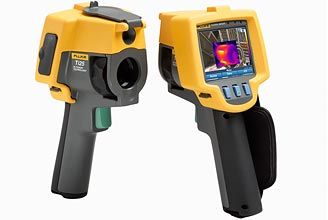Fluke Thermal Camera – A Tool for Electrical Professionals to Identify Potential Problems
RS Components carries the Fluke Professional series of infrared thermal imaging cameras. They produce clear, detailed images that assist maintenance engineers and technicians in locating hot spots and diagnosing potential problems in electrical systems. The series includes four models: the Ti300 PRO, Ti400 PRO, Ti450 PRO and the top-of-the-range model, the Ti480 PRO. These imaging cameras are ideal for a variety of technician and contractor maintenance applications. It features the most recent advancements in thermography innovation and are both affordable and feature-rich. They also produce high-quality images while being simple to use for quick scans and/or intermittent inspections. They are ideal for electrical, mechanical, and HVAC inspections, as well as building inspections.

Monitoring equipment performance with thermal imaging cameras can reduce the likelihood of unplanned downtime (caused by equipment failure), reduce reactive maintenance costs and equipment repair expenses, and increase the lifespan of machine assets. Thermal imaging is useful for detecting inconsistencies in equipment by indicating hot and cold spots in surface temperature using infrared image capture. Because heat is frequently an early symptom of equipment damage or malfunction, it is critical to monitor in preventive maintenance programs. Let’s look at how electrical professionals can use Fluke thermal imaging camera to spot potential issues.
Electrical panels
Thermal images are a simple way to identify visible temperature differences in industrial three-phase electrical circuits when compared to normal operating conditions. Technicians can quickly detect performance anomalies on individual legs due to unbalance or overloading by inspecting the thermal gradients of all three phases side by side.
Take thermal images of all electrical panels and other high-load connection points, such as drives, disconnects, and controls. Follow that circuit and look at the associated branches and loads where you find higher temperatures. With the covers removed, inspect the panels and other connections. Electrical devices should be tested when they are fully warmed up and at steady state conditions with at least 40% of the typical load. Measuring results can then be properly evaluated and compared to normal operating conditions.
Motors and drives
Electric motors are the industrial backbone. Thermal cameras are extremely useful for both troubleshooting and condition monitoring, as well as long-term preventive maintenance. You can capture infrared temperature measurements of a motor’s temperature profile as a two-dimensional image using a handheld thermal camera.
Ideally, you should inspect motors while they are running normally. Thermal cameras, unlike infrared thermometers, can capture temperatures at thousands of points at once for all of the critical components: the motor, shaft coupling, motor and shaft bearings, and the gearbox. It is important to remember that each motor is designed to operate at a specific internal temperature; the components should not be as hot as the motor housing.
Connections and wiring
Look for connections that have higher temperatures under similar loads than other connections. This could indicate a corroded, loose, or overtightened connection with increased resistance. Connection-related hot spots are typically, but not always, warmest at the point of resistance and cool with distance from that point. A cold component may be abnormal in some cases because current is being shunted away from the high-resistance connection. You may also discover broken or undersized wires or faulty insulation.
Transformers
Oil-filled transformers use a thermal imager to inspect high- and low-voltage external bushing connections, cooling tubes, cooling fans and pumps, and critical transformer surfaces.
Fluke’s thermal imagers are durable, easy to use, and far less expensive than they were even a few years ago. They are now a viable option for routine electrical maintenance. Fluke thermal imagers have undergone significant changes, which we believe are necessary to help you do your job more efficiently and quickly.
